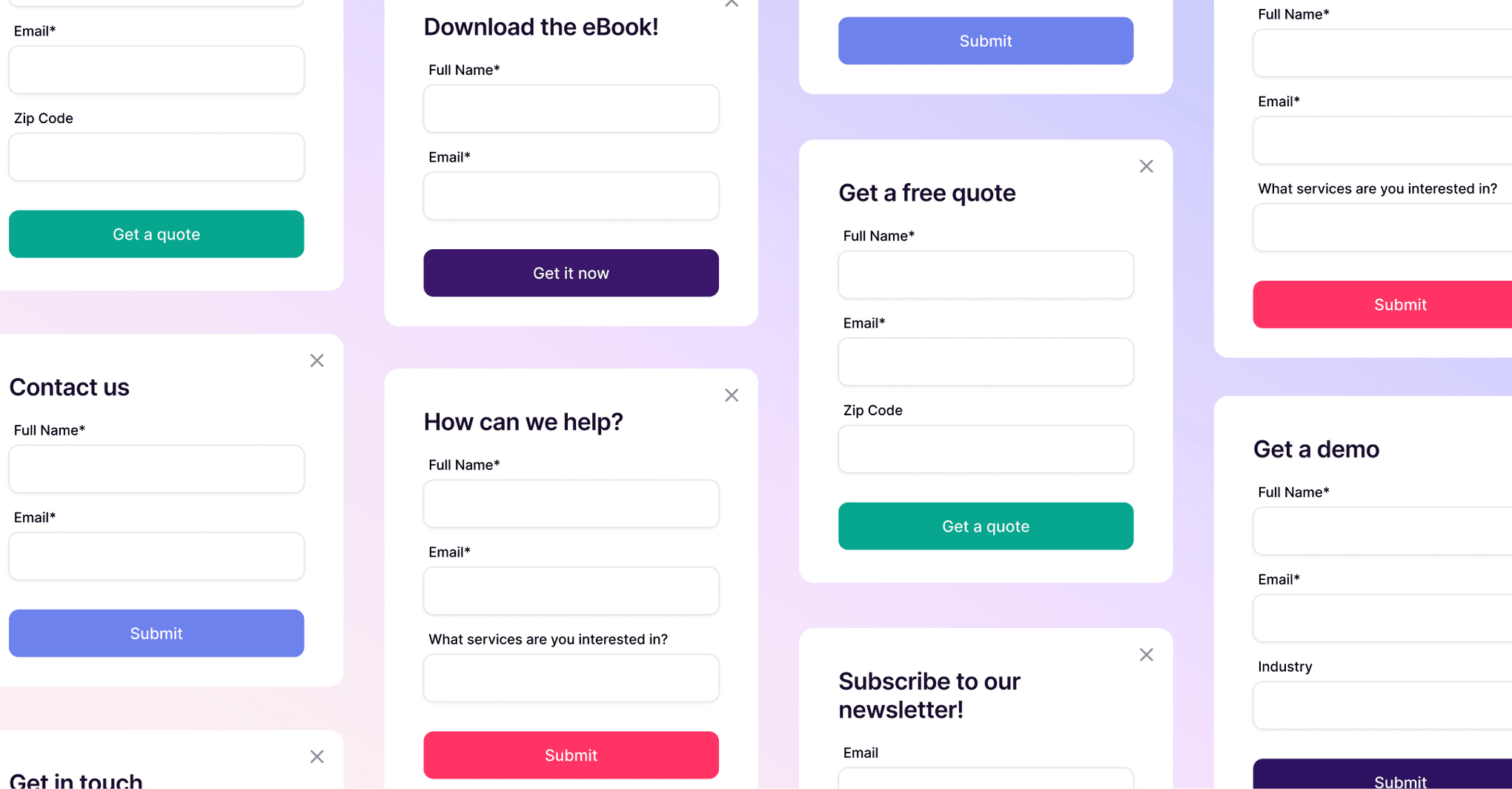Amy Wood
Contributor
Think of the last great sales experience you had, and ask yourself what made it so fantastic. If you’re anything like me (you might be, I’m pretty average), it was great because you felt like you were seen and heard.
Rather than selling me on their offer, the sales staff instead took the time to understand my needs and preferences, and then made intelligent recommendations based on the information they gleaned from our exchange.
I’ve even had one or two experiences where the staff have recommended products they don’t sell, but that were perfect for me—a big sales no-no. And yet, when they did this their brand instantly became more trustworthy and desirable in my eyes.
These sales reps—whether they knew it or not—were leveraging the power of consultative selling. And although this uber-effective sales strategy has been known for years, only a select few are actually doing it intentionally and consistently. Which is wild, because it’s not only effective, but also quite a pleasant way to interact with prospects.
The core of consultative selling is and always was about building deep, solutions-based relationships with prospects.
But what even is consultative selling, really? To define consultative selling in its current state, we first need to go back… way back.
What is consultative selling?
The '70s brought us disco, Lip Smackers, The Oregon Trail, the high five, and consultative selling.
It’s true, of all the groovy things to come out of the decade, perhaps the grooviest was Mack Hanan’s book, Consultative Selling, where he coined the term and turned the sales industry on its head.
Hanan challenged salespeople to shift their roles—from vendors trying to sell a product to consultants dedicated to finding solutions for their clients.
In an excerpt from a later edition of his book, Hanan says the biggest difference between consultative sellers and vendors is that vendors base price on cost, whereas consultative sellers base price on value. They do this by “selling the impact they can make on customer businesses”—specifically, by selling the “new profits they can add to each customer’s bottom line.”
Different sources cite anywhere from four to seven steps in the consultative selling model, so we’ve distilled it to a simple five.
- Conduct preliminary research: Use lead data you’ve acquired—such as name, company, company size, social profiles—via contact forms, lead generation forms, and other sources to do some initial digging into the prospect.
- Ask probing questions: Even though you’ve done thorough research before speaking to the client, never make assumptions. After all, you know what they say happens when you assume… Instead, ask open-ended questions that help you uncover the prospect’s goals, challenges, timeline, and budget.
- Practice active listening: Don’t waste your prospect’s time by asking a ton of probing questions and then not listening to the answers. Practice active listening by repeating back to the prospect your interpretation of their answers—doing so will ensure you’re both on the same page. And don’t forget to record everything so you (or anyone else in your organization) can refer back to the sales notes and get quickly up to speed.
- Consult: Put the “consult” back in consultative selling by sharing your knowledge with the prospect, if it helps solve their unique challenges.
- Qualify and close: Based on your investigation, determine whether the prospect is a good fit for your product or service. If so, close them; if not, be friendly and back off—persisting with an unqualified lead will be unpleasant for the both of you. If you receive pushback from a qualified lead, help them to see the potential consequences of not overcoming their obstacles and reaching their goal.
When understanding clients’ needs isn’t enough
Hanan’s principles are as true today as they were nearly 50 years ago, but with new technologies and a more competitive landscape, consultative selling has taken on a more involved definition.
According to sales training group Rain, understanding the client’s needs is no longer enough. Consultative selling must now also include strategy consulting, which requires the seller to “anticipate need, anticipate eventualities, provide and inspire with new ideas, challenge the status quo, drive change, drive decision making, and redefine reality.”
NBD, amirite?
Put simply, the modern consultative salesperson needs to not only be an expert in their clients’ fields but also demonstrate proven thought leadership and innovation.
Oh, and did I mention you have to be an expert in relationship-building too?
The reason why relationships have to be based on trust
In his book, Hanan suggests that consultative selling “replaces the traditional adversarial buyer-seller relationship with a win-win partnership in profit improvement.”
By shifting the relationship to be one of genuine reciprocity, prospects and clients begin to see their sales reps as partners in success—not as the pushy salesperson trope that we’ve all at one point experienced.
When clients see us as partners, that means there’s an inherent level of trust that’s already been established—and trust is a beautiful thing. In fact, according to a 2018 LinkedIn report, 51% of decision-makers rank trust as the most important factor they desire in a salesperson.
The. Most. Important.
Plus, building trust early on will contribute to customer loyalty, retention, and advocacy, as revealed by the 2018 Retail CX Trends Report. According to the report, which surveyed 1,300 US consumers, “customers who feel high levels of trust and loyalty are significantly more likely to share ratings (in the 90 percent range for both) and detailed commentary (both exceeded 70 percent) about their experiences.”
Win-win relationships (at scale)
Thanks to modern technology, and in particular intelligent client relationship management (CRM) systems, we can now apply the steps of consultative selling to a larger pool of prospects, multiplying our impact.
Here are just a few benefits of implementing a CRM in order to scale the consultative selling approach:
1. Consolidated lead data
In order to kick off the research stage of the consultative selling process, you need all your lead data easily accessible and in one place.
A quality CRM should gather all that data for you, consolidate it into a single record, and make it easy to find and act on.
In order for this to happen, your CRM needs to integrate with whatever tool(s) you’re using for lead gen, so that contacts are automatically synced. Of course, you can do this manually, but why the heck would you?
Even better is a CRM that enriches your lead gen data with additional details, like the contact’s LinkedIn profile and information about their employer. This extra layer of automation saves you time, and gives you everything you need to prepare for the initial client call.
Having all these details at your fingertips allows you to get to know leads before you even pick up the phone.
2. Team (consultative) selling
The lone salesman is a thing of the past. Nowadays sales and customer care can often be attributed to many team members, across a number of departments, including marketing, customer success, and even HR.
According to Copper’s 2018 CRM and Productivity Benchmark Report, which surveyed 2,500+ global business professionals, most small, medium, and enterprise businesses reported that at least three to four teammates were involved in building and managing customer relationships. As the old proverb goes, many hands make light work.
However, without the proper infrastructure to support collaboration, information is sure to slip through the cracks, leading prospects to believe they’re not a priority.
On the flip side, organizations that implement collaboration tools ensure that every employee—no matter the department—has access to the information they need to do their best and most impactful work.
It’s no surprise then that LinkedIn’s State of Sales 2018 reports 94% of top sales professionals consider collaboration tools “very important” or “important” to closing deals.
A good CRM should track all prospect interactions, from phone calls, to contracts. Not only that, it should track internal comms, too, and allow teammates to ask and answer questions quickly and efficiently.

PSST
Sell together. 🤝
For more tips on successful team selling, check out the free Guide to Team Selling in the Relationship Era.
3. Consultative selling pipelines
No doubt your company already has a sales process you follow—whether closely or loosely. However, if you’re sold on the consultative selling model and have decided it’s something you’d like to implement (or more formally implement), your CRM may be able to help.
As your lead goes through each stage of the process, you should be able to see that reflected in your CRM. Copper, for example, uses Pipelines, which track leads as they progress in the sales funnel.
Copper’s simple drag-and-drop Pipeline view allows reps to easily move leads through each stage of the sales funnel.
By defining each stage to match the stages of the consultative selling model, you can ensure that all leads get the same game-changing solutions-based service, improving your sales conversion rates.
It’s not about you; it’s about them
When you whittle consultative selling down to its most basic characteristic, it becomes clear why it’s so effective: it’s all about the client.
So often salespeople get caught up in selling the features and benefits of their product or service, but really what they need to be selling is how they can help their client achieve their goals and overcome the obstacles that are blocking them from achieving these goals.
Successful consultative selling therefore requires intelligence—and not just the facts and figures type of intelligence. Focusing on the needs of others and responding appropriately requires keen emotional intelligence.
So remember—the next prospect you interact with, resist the urge to sell them on your offer and instead focus on active listening. You never know what you might be missing out on.






